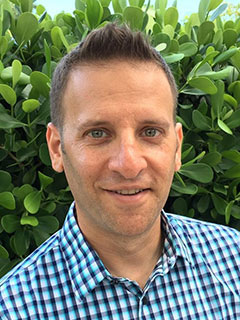By this November, 8 billion people will be calling Earth home. Soon after that, India is expected to surpass China to become the world’s most populous country.
Some may wonder if this milestone is simply because more babies are being born around the globe, but that isn’t the whole story. For the first time in history, the fertility rate fell below 1 percent in 2020, and is currently at 2.3 births per woman, down from an average of five births per woman in 1950, according to the United Nations.

Justin Stoler, associate professor of geography and sustainable development at the University of Miami College of Arts and Sciences, said the underlying idea that explains global population growth is demographic transition theory. A course he teaches, Population, Health, and Environment, is based on this framework.
“It describes the process that nations or societies typically go through during economic development. These demographic changes on the road to modernization originally took hundreds of years. But increasingly it’s happening faster—sometimes over decades—for some nations, and slower for others,” said Stoler.
Most of the population growth that we are witnessing is happening in places where people are the most vulnerable and the least resilient to climate change. According to the United Nations, the majority of the growth is happening in eight countries: India, Nigeria, the Democratic Republic of the Congo, Egypt, Ethiopia, Tanzania, the Philippines, and Pakistan.
“Countries experience demographic changes at different speeds, and there are all kinds of cultural, political, and social reasons why these transitions vary,” said Stoler. “For instance, in sub–Saharan Africa the legacy of colonialism, racism, and the HIV epidemic has unfortunately shaped not only life expectancy, but local expectations of what is possible in life.”
Stoler largely credits medical advances to more children surviving birth and growing into adulthood, as well as more adults reaching old age. The U.S. Census Bureau projects that by 2050 the global life expectancy will be 83.1 years.
“A positive message that I always convey in class is that, despite all the inequality and urgent problems in the headlines, more people are living healthier and wealthier lives than ever before,” said Stoler.
This fall, Stoler’s course will delve into the changes and reasons that influence how societies develop. One of the many questions he poses to his students is, how can we shape policy around to world to enable people to maximize their well-being in a sustainable way?
“Since the ’60s and ’70s, people were predicting the end of the world, global famines, and related calamities,” said Stoler, who also indicated that famous population scientist Thomas Malthus was wrong about the populace growing faster than the food supply. “The reality is, we are finally starting to see issues with food and water sustainability 50 years later. But climate change and consumption are the problems—not necessarily overpopulation.”
Considering that resources are being used in an unsustainable way by the wealthier nations while most of the world has kept a smaller footprint, Stoler suggests that there could be serious ramifications for us all in the future.
“Wealthier nations consume way more than their share and caused climate change,” said Stoler. “If even half of the planet lived at an American standard of living and consumption, we would absolutely have to chop down every tree, catch every fish, and pretty quickly run out of everything. We want to promote rising economic tides that will lift all boats, but we have to do it sustainably.”
Stoler said his course aims to inspire students to contemplate how demographic trends do not support all global citizens living at the U.S. and Europe’s current level of consumption. He asks his students to consider a world with no poverty and how we could sustain basic living standards.
“It’s not about overpopulation,” he said. “It’s really a combination of health equity and over-consumption problems.”
Stoler, whose research explores urban health disparities using social, environmental, and spatial epidemiological methods, has worked in numerous countries—including a decade of experience in Accra, Ghana. At the University of Miami, he directs the Social and Health Inequities Research and Education Lab.
“We’re just seeing the tip of the iceberg in terms of resource conflict,” said Stoler. “Look at the food and energy instability that resulted from Russia’s invasion of Ukraine. Now imagine providing food and heating/cooling fuel for two billion more people. What we call a refugee crisis now may pale in comparison to the culmination of population growth and climate change over the next few decades.”
With the world’s population hitting 8 billion this fall, Stoler said he looks forward to teaching his course with this milestone on the horizon.
“There are always major news headlines that directly tie back to demographic change—especially the tensions between population dynamics and the economic, social, and environmental implications of those changes,” Stoler said.

